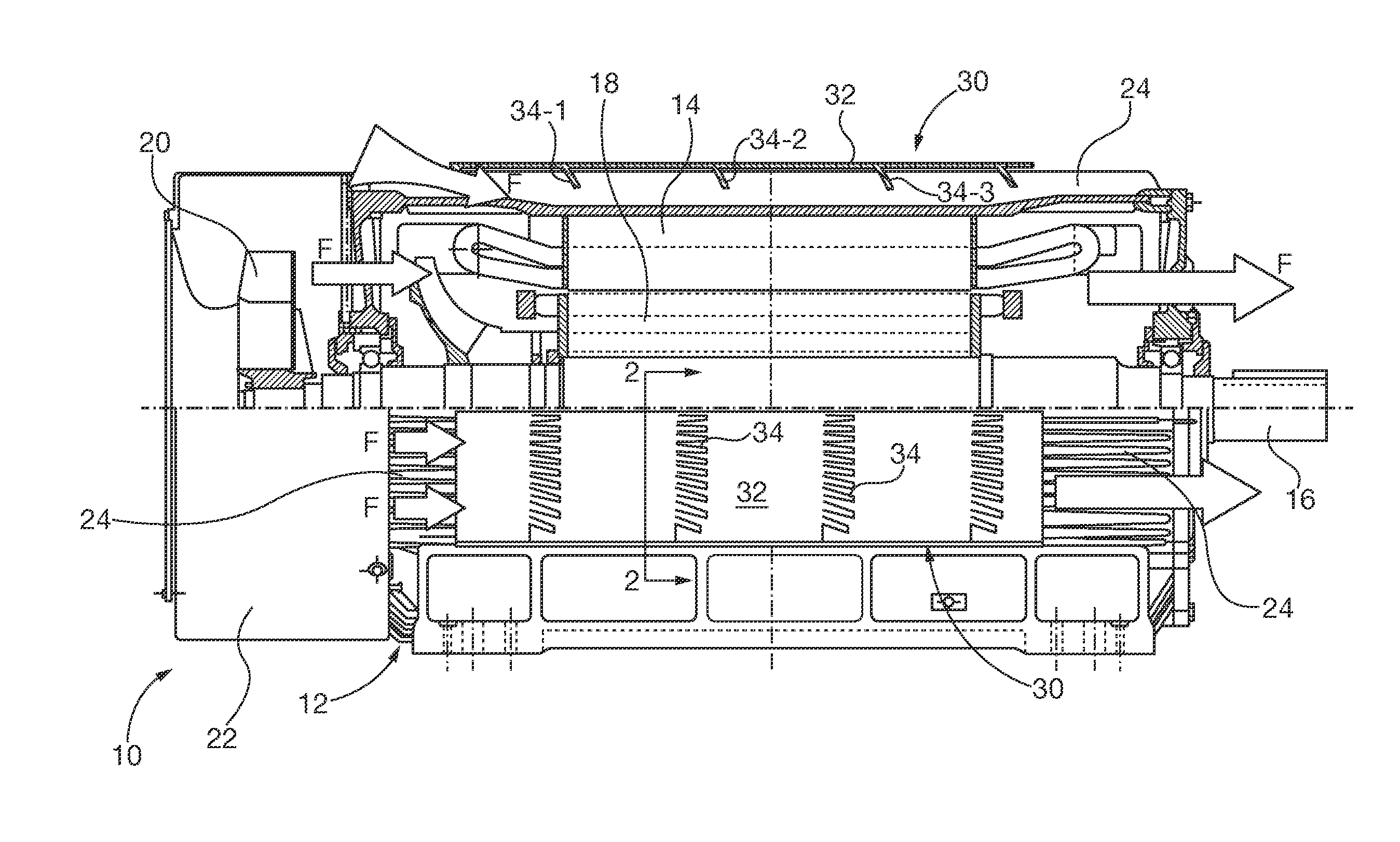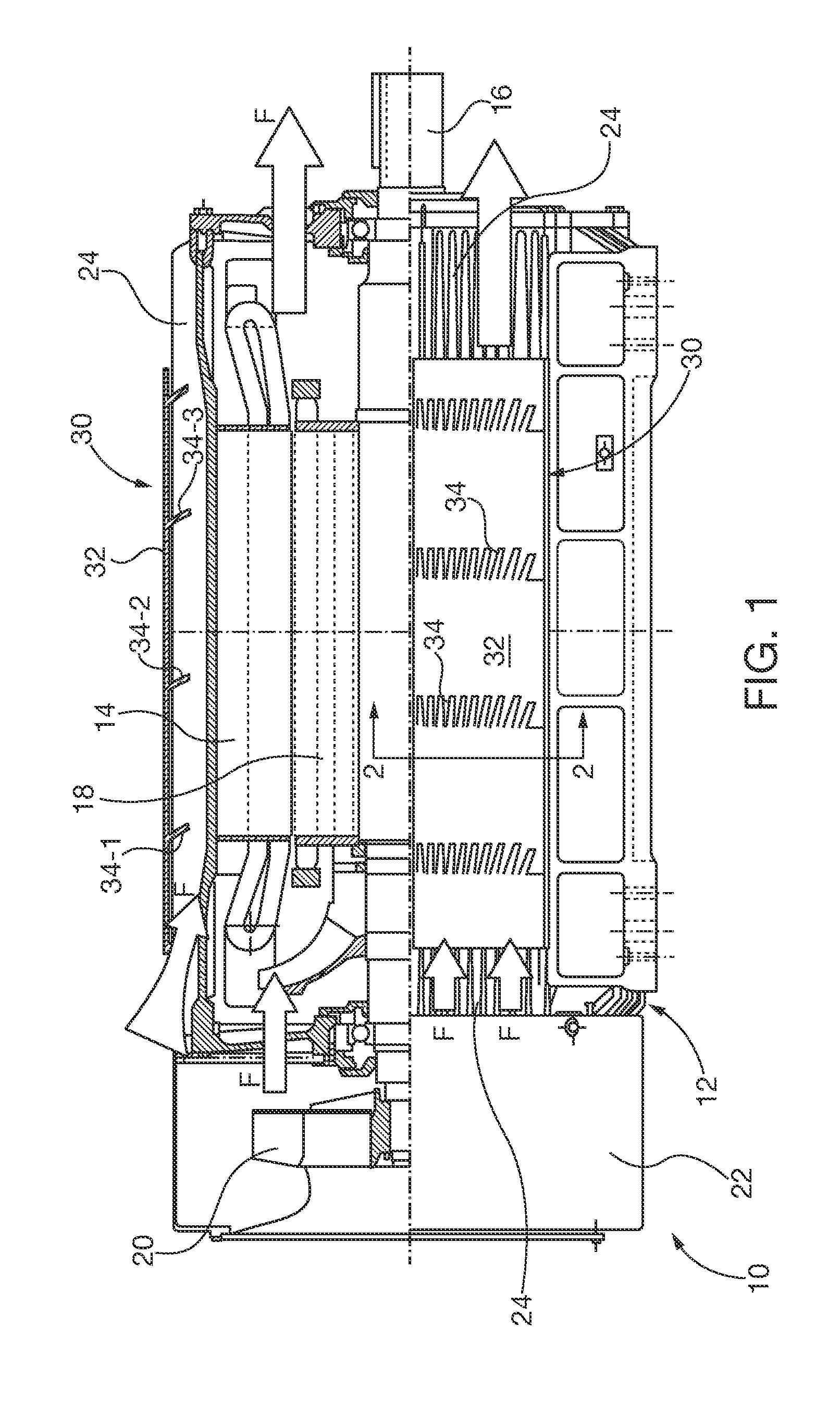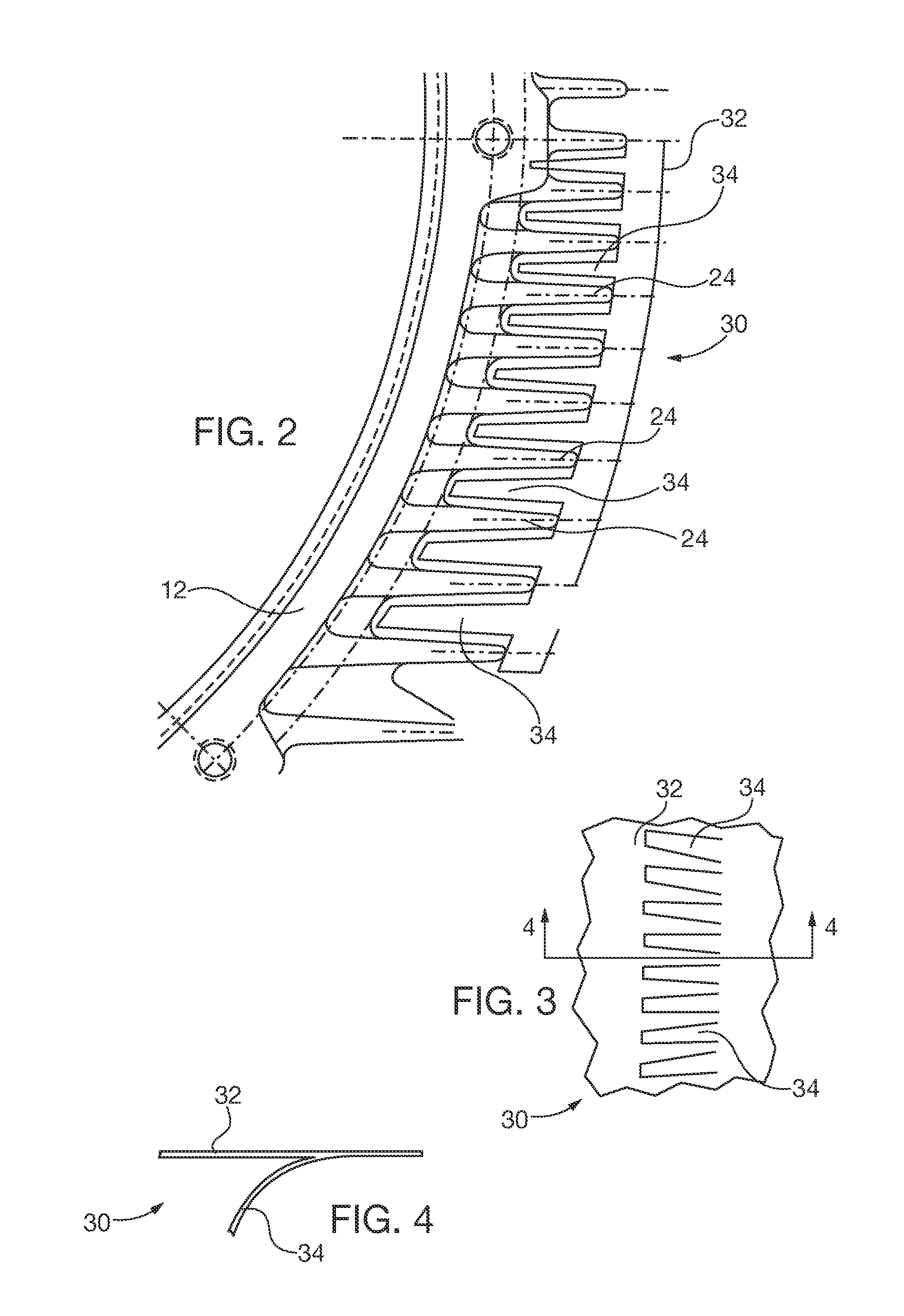Induction motor auxiliary cooling system
a technology of induction motor and cooling system, which is applied in the direction of cooling/ventilation arrangement, electrical apparatus, dynamo-electric machines, etc., can solve the problems of insufficient structural strength of copper or aluminum for higher-power induction motor housings, inability to construct tefc motor housings from steel or cast iron, and difficulty in providing sufficient external cooling air flow over tefc, etc., to improve the cooling capability of existing induction motors, low cost and effor
- Summary
- Abstract
- Description
- Claims
- Application Information
AI Technical Summary
Benefits of technology
Problems solved by technology
Method used
Image
Examples
Embodiment Construction
[0024]After considering the following description, those skilled in the art will clearly realize that the teachings of my invention can be readily utilized in induction motors, such as TEFC motors, to provide auxiliary cooling system that increases convective heat transfer efficiency and contact time between the cooling air and motor cooling fins. The cooling system of the present invention has a buffet thermal shroud that is oriented in opposed spaced relationship over existing motor housing cooling fins. An airflow channel is defined between the motor cooling fins and the shroud, for direction and passage of a cooling airflow. Tabs are oriented in the airflow channel between opposed cooling fins where they are in thermal and fluid communication with the cooling air flow. In some embodiments the tabs are shroud fingers that project inwardly from the shroud. The tabs or shroud fingers create turbulence in the cooling air flow that increases convective heat transfer efficiency and co...
PUM
 Login to View More
Login to View More Abstract
Description
Claims
Application Information
 Login to View More
Login to View More - R&D
- Intellectual Property
- Life Sciences
- Materials
- Tech Scout
- Unparalleled Data Quality
- Higher Quality Content
- 60% Fewer Hallucinations
Browse by: Latest US Patents, China's latest patents, Technical Efficacy Thesaurus, Application Domain, Technology Topic, Popular Technical Reports.
© 2025 PatSnap. All rights reserved.Legal|Privacy policy|Modern Slavery Act Transparency Statement|Sitemap|About US| Contact US: help@patsnap.com



